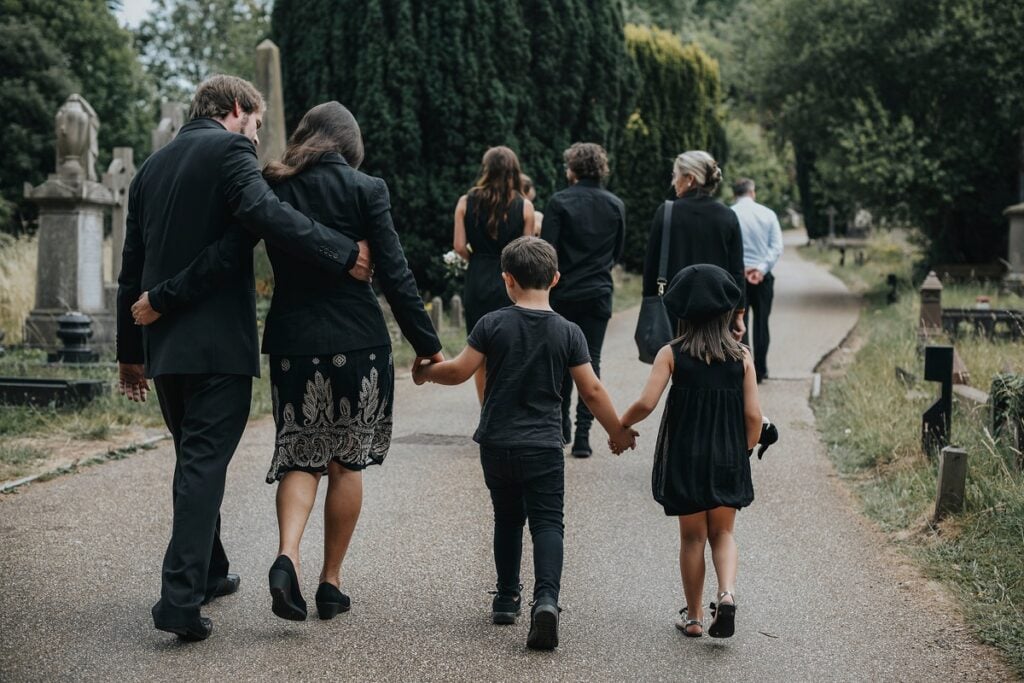Colors associated with grief and mourning vary widely across the world, each carrying its own cultural and historical significance. While black is the primary color of mourning in the West, other cultures have turned to white, red, and even purple to express loss and respect for the departed. This article explores the evolution of mourning attire, from ancient practices to modern influences, and examines why black became the predominant color of grief in Western society.
Early Mourning Attire in Ancient Civilizations
Ancient Egypt associated dark, earthy tones with mourning, using black to symbolize rebirth and the transition to the afterlife. This connection transformed black into a color of reverence rather than fear, reserved for the sacred journey after death
In Ancient Rome and Greece, dark colors such as gray and deep purple were worn as symbols of solemnity and mourning. These shades signified respect for the deceased and also served as markers of social rank during times of grief
The Rise of Black in Western Culture
In medieval Europe, dark colors became associated with humility, solemnity, and respect, and black stood out as the color of mourning due to its austerity. Monastic orders and clergy often wore black to signify piety and detachment, reinforcing the connection between black and spiritual mourning
During the Victorian era, Queen Victoria’s public mourning for Prince Albert cemented black as the primary color of grief. Her prolonged period of wearing black created a social precedent, and strict guidelines emerged regarding mourning attire, with specific colors and styles for widows and mourners of different relations to the deceased
White as the Color of Mourning in Eastern Cultures
In East Asian cultures, white has long symbolized purity and the soul’s release from the body. White is a common color for funeral attire in countries like Japan, China, and Korea, where it represents a return to innocence and the peaceful journey to the afterlife
In India, widows traditionally wear white to signal renunciation and the end of worldly joys. This transition honors the passage from marital life to a more introspective, spiritual existence, using white as a symbol of absence and simplicity
The Role of Red and Other Colors in Mourning
In South Africa, red can symbolize both mourning and strength, representing the life force of ancestors. Red’s dual meaning ties it to the presence of the deceased in memory and spirit, making it a color of remembrance and power
Tibetan death rituals sometimes use red to honor the departed soul, as red symbolizes vitality and spiritual energy. This color connects the physical and spiritual realms, preserving the spirit’s vibrancy beyond physical life
Purple, associated with royalty and spiritual transformation, also appears in mourning attire in certain religious and historical contexts. In some European traditions, purple symbolized the balance between life and death, used by clergy or in rituals to reflect spiritual reverence for the deceased
Color Symbolism in Religious Mourning Traditions
Judaism includes the symbolic tearing of black clothing, known as keriah, which represents a mourner’s internal grief. This practice aligns black with humility and loss, providing a visual cue for mourning within the community
In Islam, white is worn for funeral rites to emphasize simplicity and purity, removing worldly distractions. White is also believed to reflect the concept of returning to a state of spiritual purity upon death
The Evolution of Mourning Jewelry and Accessories
Victorian mourning jewelry, often crafted from black jet or featuring locks of the deceased’s hair, extended the symbolism of mourning colors beyond clothing. These pieces served as keepsakes and a way for mourners to carry a part of their loved one with them, embedding mourning symbols into daily life
In modern times, people continue to use subtle mourning symbols, like black ribbons or dark jewelry, as respectful yet understated reminders of loss. Accessories add an intimate dimension to mourning traditions, personalizing the ways people remember loved ones
Global Shifts in Mourning Attire
The spread of Western customs through globalization has popularized black attire in funerals worldwide, leading to a blending of traditions. In many cultures, people now adopt Western mourning attire even as traditional colors remain significant in private or familial rituals. This shift allows mourners to honor loved ones in ways that resonate with both cultural heritage and personal values
This blending has also encouraged more flexible mourning practices, where individuals choose colors and styles that reflect their unique relationship with the deceased, rather than adhering to strict cultural norms
The Psychological Impact of Black as a Mourning Color
In the West, black’s enduring association with mourning reflects its psychological impact. Black embodies finality, solemnity, and dignity, helping mourners feel grounded. Its simplicity allows a collective display of grief, helping society recognize and respect someone’s loss. Black functions as a form of social armor, providing space and acknowledgment to those experiencing grief
Today, mourning attire reflects a mix of traditional and personal choices. Many mourners choose colors or items that hold special meaning for the deceased, combining traditional mourning colors with unique touches. This modern approach to mourning attire allows people to honor loved ones while celebrating individuality and shared memories
Modern memorial services increasingly invite guests to wear colors significant to the deceased, such as bright hues for someone who embraced life or a favorite color to reflect personality. This trend underscores a move toward personal expression in grief, honoring the full life and spirit of those we remember.
See also: What to wear to a funeral

